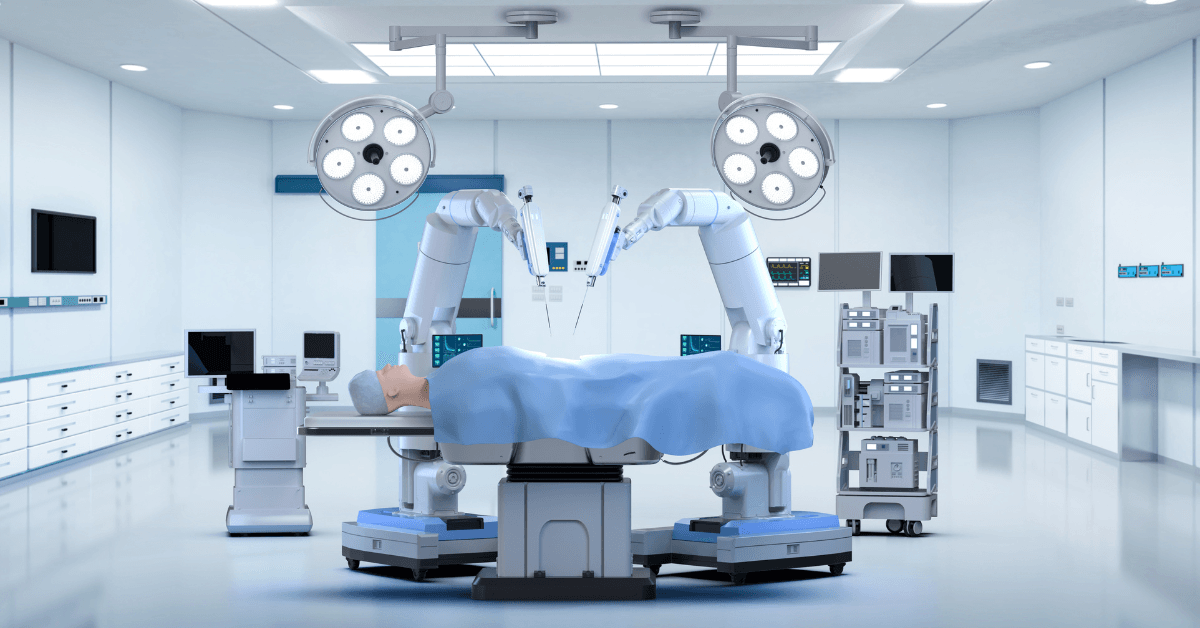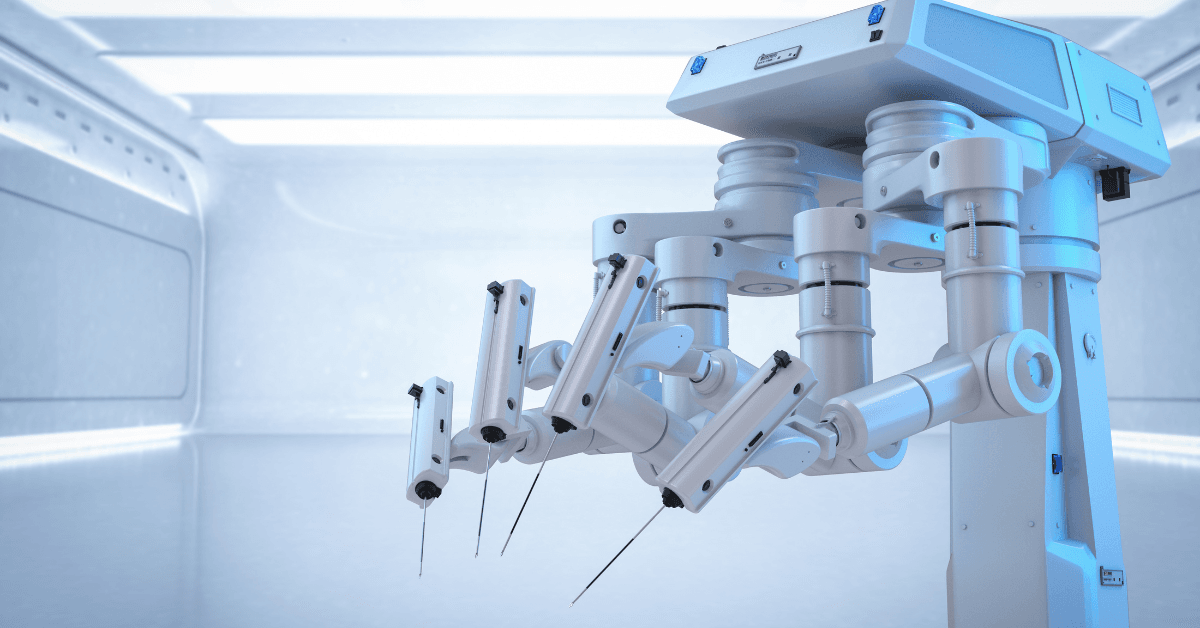What Benefits Does Robotic Surgery Offer?
Modern medicine has been revolutionized by robotic surgery, which provides both patients and doctors with innovative options. This technology makes complicated processes safer and more effective by combining control, flexibility, and accuracy. What Are the Advantages of Robotic Surgery-Let’s examine the main advantages of robotically aided surgery and the reasons it’s quickly rising to the top of the operating room hierarchy globally
1. Improved Accuracy and Precision-What Are the Advantages of Robotic Surgery
Surgeons can observe the surgery site in three dimensions thanks to robotic equipment like the da Vinci Surgery System. Surgeons can see small structures, such as blood vessels or nerves, with unparalleled clarity thanks to these high-definition images. Furthermore, robotic arms reduce natural tremors while simulating human hand motions. Surgeons may now execute delicate procedures with sub-millimeter accuracy, such as stitching or tissue excision.
This accuracy reduces the possibility of human mistakes, particularly in processes that call for complex movements. Robotic instruments, for instance, assist in protecting surrounding nerves that are essential for sexual and urine function during prostatectomies. According to studies, robotic surgery lowers positive margin rates by 15% when compared to conventional techniques.

2. Maximum Outcomes with Minimally Invasive Procedures
Robotic procedures only require tiny incisions, sometimes just a few millimeters long, in contrast to traditional surgery. Less damage to muscles, tissues, and organs results from smaller wounds. Patients gain from less scarring, less risk of infection, and decreased blood loss. Furthermore, without requiring extensive incisions, robotic instruments may reach difficult-to-reach places like the deep lung tissue or the pelvic cavity.
From a console, surgeons use robotic arms, easily maneuvering around anatomical impediments. This agility, for example, has prevented the damage of healthy tissue during gynecologic procedures for endometriosis. Using less intrusive techniques also reduces hospital stays. Many patients return home within 24 hours or the same day.
3. Quicker Recuperation
Less physical damage directly accelerates healing. For instance, patients who have robotic hernia repair return to their regular activities 50% sooner than those who have open surgery. After surgery, less pain medication is required, which reduces the chance of reliance. Smaller incisions also heal more quickly, enabling people to resume normal activities, employment, and exercise sooner.
According to a 2023 Johns Hopkins study, individuals who had colorectal robotic surgery regained their ability to eat and drink 30% more quickly than those who underwent laparoscopic surgery. By using fewer hospital resources, quicker recoveries also lower healthcare expenditures. Families value less caring responsibilities, which makes robotic choices both logistically and emotionally desirable.
4. Reduced Complication Risk-What Are the Advantages of Robotic Surgery
By reducing hand tremors and stabilizing devices, robotic systems improve safety. Surgical professionals lower the risk of internal injury by avoiding inadvertent slips. Additionally, real-time input from advanced imaging alerts workers to possible problems like abnormal tissue or bleeding.
Robotic-assisted hysterectomies are 40% less likely to cause problems than traditional techniques, according to data from the Mayo Clinic. Patients are further protected by lower infection rates, which are brought about by smaller wounds and clean robotic instruments. With this technology, even high-risk groups—like those who are fat or have diabetes—see safer results.

5. Increased opportunities for surgery-What Are the Advantages of Robotic Surgery
Robots enable processes previously considered too dangerous or unattainable. Today, ENT experts remove cancers from the throat transorally, while cardiac surgeons fix mitral valves without breaking the chest. Robotics is used by pediatric surgeons to precisely fix congenital deformities while preventing undue harm to developing tissues.
Furthermore, a single little incision may perform full procedures thanks to single-port robots. This invention helps operations involving the abdomen and cosmetics when apparent scarring is an issue. Expect robotics to handle more complicated procedures, such as spine or brain surgery, as technology advances.
6. Better Ergonomics for Surgeon
Traditional surgery sometimes forces surgeons into uncomfortable postures that can lead to musculoskeletal problems or exhaustion. Surgeons can operate while seated and with their arms and wrists in neutral positions thanks to robotic consoles. By reducing physical strain, this ergonomic benefit allows for longer, more concentrated processes without sacrificing performance.
According to a Harvard Medical School study, 78% of surgeons reported less back and neck discomfort after implementing robots. Younger surgeons are also drawn to more precise areas like cancer and microsurgery by improved ergonomics.
7. Uniform Results Among Surgeons-What Are the Advantages of Robotic Surgery
Robotic technologies reduce surgeon variability by standardizing approaches. Pre-programmed parameters guarantee that instruments operate within secure bounds, avoiding unintentional mistakes. Additionally, surgeons may repeat effective techniques and exchange data worldwide.
For example, a kidney transplant protocol created in South Korea is being used by Brazilian surgeons, increasing success rates globally. In teaching hospitals, where trainees use the same resources as specialists, consistency is extremely important.

8. Long-Term Cost-Effectiveness
Robotic systems are expensive initially, but they end up saving money over time. Shorter hospital stays, fewer problems, and quicker recoveries reduce overall costs. According to Health Affairs research, compared to open procedures, robotic operations save $2,000 for each patient.
Reduced readmission rates and higher patient turnover are also advantageous to hospitals. Smaller clinics may now afford the technology because of declining system prices brought on by increased competition among robot makers..
9. Confidence and Patient Satisfaction
Following success stories, more and more patients are requesting robotic surgery. Being aware that their surgeon has cutting-edge equipment increases self-assurance and lowers pre-operative anxiety. According to polls conducted after surgery, 89% of robotic patients said their experience was “excellent,” reporting little discomfort and a speedy return to their regular lives.
Positive results can improve the reputation of hospitals. Robotics centers frequently have better online reviews and more patients. Contented patients become champions, recommending comparable services to friends and family.
10. Healthcare that is future-proof
Regular software upgrades that incorporate AI and machine learning are given to robotic systems. Future technologies may automate repetitive processes, recommend the best places for incisions, or anticipate difficulties. Even remotely guiding operations might be made possible by tele-robotics, which would decrease access gaps to healthcare in rural areas.
Hospitals may better prepare for tomorrow’s issues, such as aging populations or complicated chronic illnesses, by investing in robots now. The next generation of medical innovation will be driven by early adopters.
Taking Care of Typical Issues
Critics claim that robots diminish surgeon autonomy or depersonalize treatment. These devices, however, complement physicians’ abilities rather than taking their place. Surgeons maintain complete control and use robots to better apply their knowledge.
Additionally, cost obstacles are vanishing. Government funding and leasing schemes enable hospitals to implement robots without incurring significant debt. Regardless of geography or financial status, patients may now obtain state-of-the-art care.
Conclusion: The Significance of Robotic Surgery
Unquestionably, robotic surgery has the following benefits: accuracy, security, speed, and accessibility. These advantages will increase as technology develops, changing healthcare for both patients and professionals. Knowing robotics is essential for making wise judgments, whether you’re thinking about surgery or are just researching medical advancements.
By bookmarking this page or signing up for our newsletter, you can stay informed about this quickly changing field. We’ll keep providing information on how robots and other advancements are paving the way for a healthier and more promising future for all.
FAQ:
What are the advantages of robots in surgery?
- Robots allow for less intrusive operations, improve accuracy, and decrease human mistakes. They also provide safer, more effective procedures by enhancing surgeon ergonomics, reducing complication risks, and speeding up recovery.
What are the advantages of robotic surgery class 8?
- Patients benefit from smaller incisions, quicker recovery, and less discomfort with robotic surgery. Additionally, it introduces students to cutting-edge technologies, igniting their interest in STEM and medical innovation.
Which of the following is an advantage of robotic surgery?
- One major benefit is a lower risk of infection and blood loss. Furthermore, robotic equipment makes it easy to access confined regions, which enhances the results of difficult operations like cancer or heart surgery.
What are the advantages of surgical?
- Robotic surgery improves precision, reduces tissue damage, and standardizes outcomes. Additionally, they address accessibility concerns, enabling surgeons throughout the globe to duplicate cutting-edge methods and democratizing access to high-quality treatment.
What problems does robotic surgery solve?
- Human constraints such as hand tremors and weariness are addressed by robotic surgery. It transforms conventional surgical boundaries by removing huge incisions, shortening recovery times, and addressing intricate anatomical issues.



